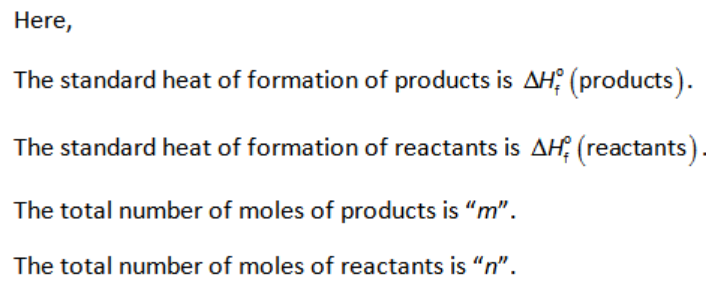Question 1 : The standard enthalpies of formation, at 25.00 °C, of methanol (CH40(1)), water (H2O(1)), and carbon dioxide (CO2(g)) are, respectively, -238.7 kJ/mol, -285.8 kJ/mol, and -393.5 kJ/mol. Calculate the change in the entropy of the surroundings (in J/K) upon the combustion of 13.3 g of methanol under a constant pressure of 1.000 atm and a temperature of 25.00 °C. N.B. combustion is the reaction of this substance with molecular oxygen to produce water and carbon dioxide.
Question 1 : The standard enthalpies of formation, at 25.00 °C, of methanol (CH40(1)), water (H2O(1)), and carbon dioxide (CO2(g)) are, respectively, -238.7 kJ/mol, -285.8 kJ/mol, and -393.5 kJ/mol. Calculate the change in the entropy of the surroundings (in J/K) upon the combustion of 13.3 g of methanol under a constant pressure of 1.000 atm and a temperature of 25.00 °C. N.B. combustion is the reaction of this substance with molecular oxygen to produce water and carbon dioxide.
Chemistry: Principles and Practice
3rd Edition
ISBN:9780534420123
Author:Daniel L. Reger, Scott R. Goode, David W. Ball, Edward Mercer
Publisher:Daniel L. Reger, Scott R. Goode, David W. Ball, Edward Mercer
Chapter5: Thermochemistry
Section: Chapter Questions
Problem 5.61QE: When 7.11 g NH4NO3 is added to 100 mL water, the temperature of the calorimeter contents decreases...
Related questions
Question

Transcribed Image Text:Question 1 :
The standard enthalpies of formation, at 25.00 °C, of methanol (CH40(1)), water (H2O(1)), and carbon dioxide (CO2(g)) are, respectively, -238.7 kJ/mol, -285.8 kJ/mol, and -393.5 kJ/mol. Calculate the change in the entropy of the surroundings (in J/K) upon the combustion of 13.3 g of methanol
under a constant pressure of 1.000 atm and a temperature of 25.00 °C. N.B. combustion is the reaction of this substance with molecular oxygen to produce water and carbon dioxide.
Expert Solution
Step 1

Step 2


Step 3



Trending now
This is a popular solution!
Step by step
Solved in 5 steps with 10 images

Knowledge Booster
Learn more about
Need a deep-dive on the concept behind this application? Look no further. Learn more about this topic, chemistry and related others by exploring similar questions and additional content below.Recommended textbooks for you

Chemistry: Principles and Practice
Chemistry
ISBN:
9780534420123
Author:
Daniel L. Reger, Scott R. Goode, David W. Ball, Edward Mercer
Publisher:
Cengage Learning

Chemistry & Chemical Reactivity
Chemistry
ISBN:
9781133949640
Author:
John C. Kotz, Paul M. Treichel, John Townsend, David Treichel
Publisher:
Cengage Learning

Chemistry & Chemical Reactivity
Chemistry
ISBN:
9781337399074
Author:
John C. Kotz, Paul M. Treichel, John Townsend, David Treichel
Publisher:
Cengage Learning

Chemistry: Principles and Practice
Chemistry
ISBN:
9780534420123
Author:
Daniel L. Reger, Scott R. Goode, David W. Ball, Edward Mercer
Publisher:
Cengage Learning

Chemistry & Chemical Reactivity
Chemistry
ISBN:
9781133949640
Author:
John C. Kotz, Paul M. Treichel, John Townsend, David Treichel
Publisher:
Cengage Learning

Chemistry & Chemical Reactivity
Chemistry
ISBN:
9781337399074
Author:
John C. Kotz, Paul M. Treichel, John Townsend, David Treichel
Publisher:
Cengage Learning

Chemistry
Chemistry
ISBN:
9781305957404
Author:
Steven S. Zumdahl, Susan A. Zumdahl, Donald J. DeCoste
Publisher:
Cengage Learning


Chemistry: An Atoms First Approach
Chemistry
ISBN:
9781305079243
Author:
Steven S. Zumdahl, Susan A. Zumdahl
Publisher:
Cengage Learning